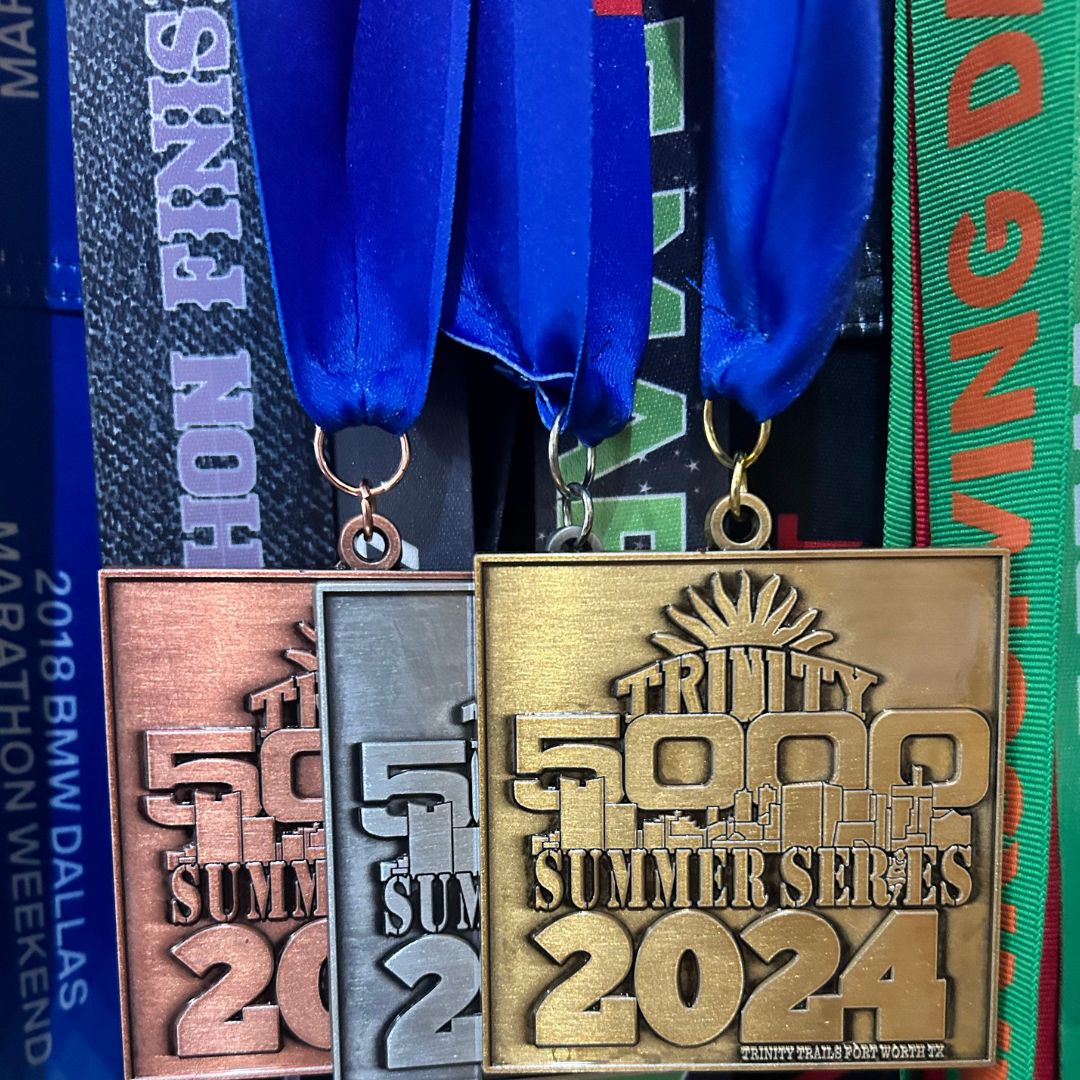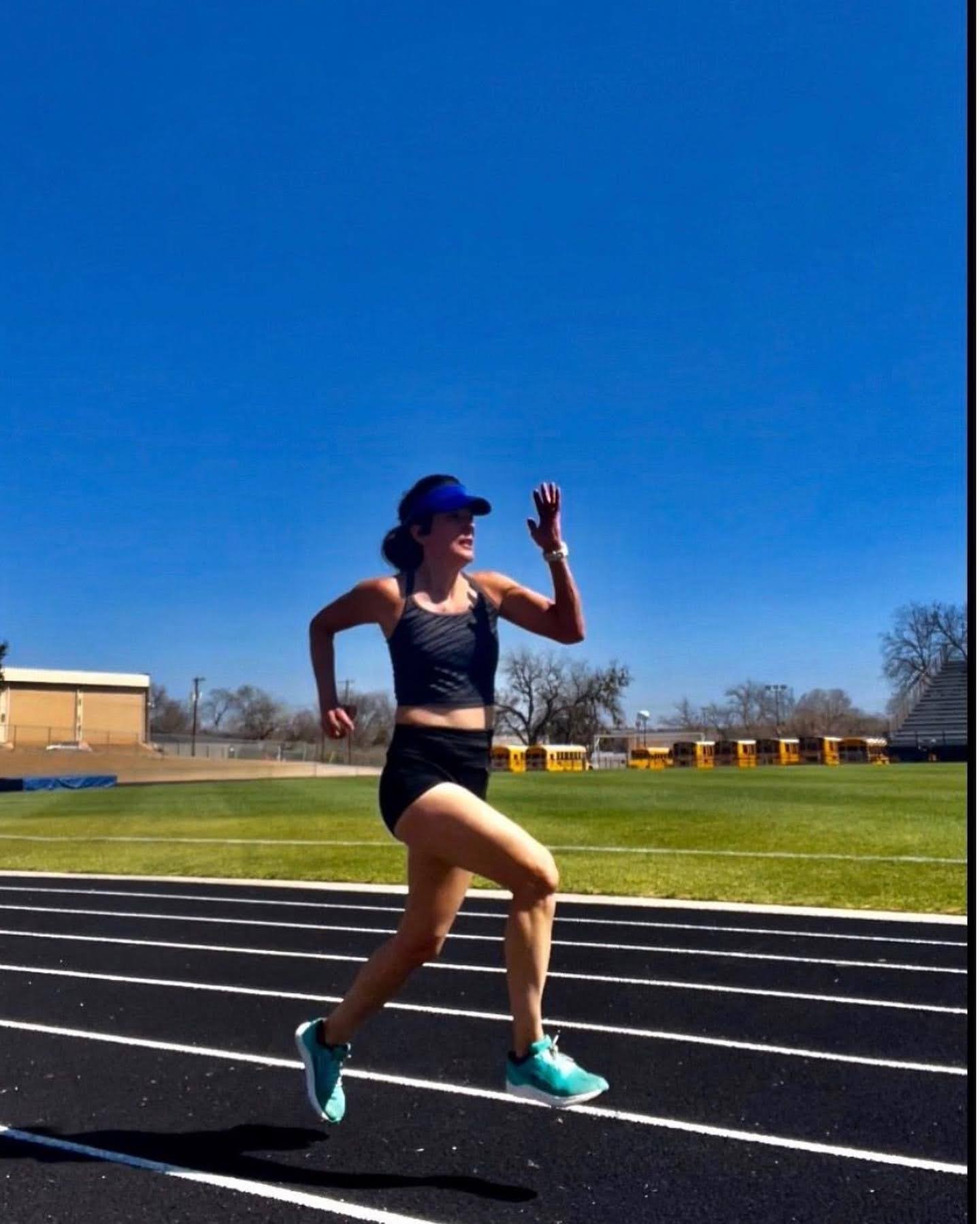I often write about building good habits because when life is a series of practices on autopilot, it is effortless to live a healthy lifestyle.
It’s also helpful to recognize bad habits and work to correct them. I don’t mean your penchant for chocolate covered pretzels, but instead, those bad running habits that seem harmless, but can steal your progress.
Are you guilty of any of these ten bad running habits? You can improve your performance and longevity in the sport by working to break these bad habits.
Sometimes it’s not about what you do, but what you’re not doing. Are you skipping over any of these essential practices for runners?
BAD HABIT: NOT WARMING UP
A warm-up helps prepare the joints, connective tissues, and muscles for the work. Ignoring the warm-up compromises the workout, recovery and increases injury risk.
“If you put your energy into a hard training effort but do little beforehand and nothing afterward to maximize the benefits of that training…then you aren’t netting a full return on your hard-fought investment. You won’t achieve the full amount of adaptation that you could, and the injury risk factor gets ratcheted up as well.” — Dr. Kelly Starrett, Ready To Run
Break the habit: Spend 10-15 minutes with a pre-run warm-up routine. If you don’t have time, cut your run ten minutes short. You’ll gain more progress by warming up than you will with ten minutes extra of running. If time is short, it’s even more critical that you are maximizing the time spent for the best results.
Try a dynamic warm-up followed by mobility exercises to combat any current dysfunction (tight shoulders, hips, ankles, etc.)
BAD HABIT: NOT WORKING ON FORM AND SKILL
Running is a skill. Most runners strap on their shoes and start piling on the miles without any thought to correct form or the skill of running. No wonder injury rates are so high among runners each year.
Break the habit: Here are three bad running habit corrections you can work on today, that will instantly help you improve.
Looking At The Ground
Keep your eyes focused straight ahead of you. If your running shoes come into your field of vision, you’re looking in the wrong direction. Looking ahead helps keep your posture upright and your air passages open.
Allowing Your Arms To Cross In Front of Your Body
Keep your elbows close to your sides and swing your arms in a forward and back motion only. If your arms swing in front of your body, you are wasting precious energy and efficiency.
Landing Your Foot Out in Front of The Body
Your foot should land directly under your hips, not out in front of your body. If you’ve been reaching during your run, this can be a hard habit to break. Try filming yourself running, then slow down the footage to see how your foot lands. If you are inefficiently reaching your front leg in front of your body, work to improve.
BAD HABIT: NOT FUELING PROPERLY
We don’t train in a bubble. Your lifestyle choices outside your workouts affect your performance. If you’re not fueling properly, it will show in your progress and results. If you are eating too little, too much, or not the right foods to fuel your performance, you’re leaving potential on the table.
Break the habit: Check out Eat to Run: A Practical Guide to Pre and Post Running Nutrition For Optimal Performance.
BAD HABIT: NOT RECOVERING
Adaptation (getting faster, stronger, building muscle) happens in the recovery period after the workout, not during the exercise itself. If you don’t allow adequate recovery after a workout, you won’t get the benefits of your hard work, and you’ll risk injury and over-training.
Break the habit: Rest days are part of the plan. Vary high-intensity days with low-intensity days, and always include rest days in your schedule.
BAD HABIT: NOT WORKING ON MOBILITY
I have a confession. I never stretched at all the first decade I was running. Do you know what happens when you don’t stretch in your 20s and your 30s? It eventually catches up with you. I didn’t start paying attention to mobility until I started dealing with hip and knee pain. Turns out ignoring mobility, combined with an office job results in muscles imbalances, poor movement patterns, and unnecessary aches and pains. Now I’m focusing on reversing all those years of damage, but you can’t undo ten years of bad habits in six months.
If you sit in an office chair eight hours a day and run most days, it’s even more critical. If you’re young, start now, if you’re not-so-young (like me), start yesterday.
Break the habit: Start every workout with a dynamic warm-up, and finish each workout with a few minutes of mobility exercises or foam rolling to target tight muscles or restricted movement, like in your hips, shoulders or ankles. Your body will thank you.
How your desk job is ruining your running performance, and what to do about it.
BAD HABIT: NOT STRENGTH TRAINING
I get it, runners want to run, not spend hours in the gym, but strength training is essential for runners. Runners who strength train can reduce running injuries and improve their running performance with a couple of days of runner-specific strength in their schedule each week.
Running without strength training can lead to muscle imbalances or muscle loss, which can lead to injury.
Break the habit: You don’t need to spend hours in the gym, but short, targeted runner-specific strength training workouts will help ensure longevity in the sport.
BAD HABIT: NOT GETTING ADEQUATE SLEEP
During the deep sleep stages, your body releases growth hormones to spur muscle repair and growth. If you lose sleep, you ultimately are sacrificing your recovery, which directly affects your performance.
Break the habit: Aim for at least seven to eight hours of quality sleep per night for the best performance.
BAD HABIT: NOT LISTENING TO YOUR BODY / IGNORING PAIN
Pain is your body’s way of communicating to you that something is wrong. Pain may be telling you to rest, that your form is incorrect, or you’re running too many miles for your current fitness level.
Break the habit: When your body talks (aka pain), listen! Figure out the source of the pain (hint: what hurts is not usually the source) and work to make corrections. Sometimes rest is all you need, and sometimes you need help from a professional. Ignoring pain doesn’t make it go away.
Just tell it to me straight doc, can I still run this weekend? http://t.co/CLYd0CvLun pic.twitter.com/4ULxH1kwBI
— Fuel Running (@fuelrunning) April 18, 2015
BAD HABIT: NOT DRINKING ENOUGH WATER
Runners need to stay hydrated to perform their best. I am not only talking about in the summer, or when it’s hot, your tissues need water all year round to perform their best. Even a small decline from optimal water levels can negatively affect performance.
Break the habit: Everyone’s hydration needs are different. Start with eight to ten cups of water a day, and adjust accordingly based on the outcome. If you run, you likely need more. Urine color is a good indicator: If dark yellow drink more water, completely clear, drink a bit less.
BAD HABIT: NOT COOLING DOWN
A cool-down helps your body return to normal breathing and heart-rate and speeds up recovery. Skipping the cool down can slow down progress, and recovery.
Break the habit: Always spend a few minutes stretching or performing mobility or foam rolling exercises post-workout.
Do you recognize any of these bad habits in your training? You may, because as runners, we are all probably guilty of at least a couple of them at one time or another.
DON’T JUST READ; TAKE ACTION
If most of these sound a little too familiar, don’t attempt to make all the changes at once. Choose one or two that seem most natural to change and start there. Once you build a new habit or two by consistently repeating the practice over and over, then move on a new challenge.
Gaining awareness of ways to improve is the first step. A lot of times we are running around (pun intended) with blinders on, not realizing we are sacrificing results with our poor habits. Now you know better, you can do better. Who’s with me?
Did you like this post? Do you know someone who might benefit? It helps me when you share with your friends and followers on Facebook, Twitter, or Pinterest.
Questions? I’d love to help.













